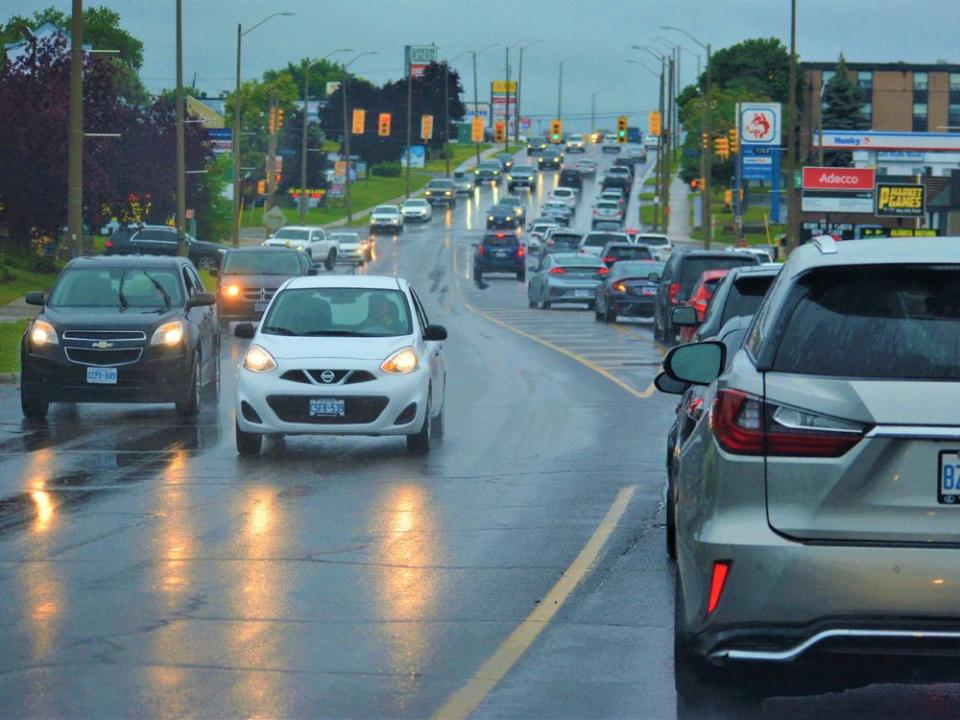Jack Mintz: Freezing insurance premiums won’t work

Canadians feeling the pinch of high prices want their politicians to take immediate action to relieve the pain. The simple-minded policy is to cap prices. Temporary price freezes have been suggested for cell phone charges, gasoline and food products, to name a few. Don’t do it, governments! Be smart: Avoid price controls and, if you feel you really must act, provide one-time grants or tax relief to cash-strapped consumers.
Even in Alberta, with its well-known entrepreneurial, competitive spirit, politicians have succumbed to populist, Soviet-style price controls. At the end of January, Matt Jones, minister of affordability and utilities — yes, we’ve got a department by that name! — couldn’t resist trotting out an auto insurance premium freeze until the end of 2023 to help Albertans cope with inflation. It was a shock for property insurance companies that the United Conservative Party government would re-introduce a failed NDP policy that in 2017 froze insurance premiums for two years.
The NDP freeze did little in the end. With margins being squeezed by rising auto repair and personal injury costs, insurance companies had to cut costs by, for instance, denying high-risk drivers insurance or dropping optional coverage. Once the price cap was lifted, insurance premiums soared, increasing by over 10 per cent as companies that had elected to stay in Alberta — not all did — made up for their rising car repair and personal injury costs during the freeze. After the Kenney government introduced reforms in 2020, insurance premiums settled down to a reasonable rate of increase: just 2.8 per cent in 2022 compared to Canada’s 6.9 inflation rate.
So why did insurance premiums become an issue for the UCP government? One likely reason is an EY report commissioned by the state-owned Insurance Corporation of British Columbia (ICBC) that compared insurance rates for 27 driver profiles in two to five cities in each province (not including Quebec) as of September 1, 2022. Not surprisingly, it concluded that B.C. generally had the lowest insurance premiums with Alberta near the highest — a widely-noted result that sparked Minister Jones’ January decision to freeze.

The EY report had three fundamental flaws in my view. First, it excluded discounts from the analysis. This is potentially quite important since private property insurance companies offer a host of discounts, including for buying multiple insurance plans for home, car and other property. ICBC, by contrast, offers only auto insurance. Second, EY obtained five quotes for each case but used the average of the second and fourth quotes rather than an average of all five quotes. Maybe that was cherry-picking, maybe not. Third, the report makes clear that the products it compared across provinces are not all the same in terms of benefits, but no adjustment was made for these differences.
To investigate further, I obtained data from the General Insurance Statistical Agency, which operates on behalf of insurance regulators in provinces that don’t have government auto-insurance monopolies. As the table shows, British Columbia does not have the lowest average written premium. That distinction belongs to Quebec. Alberta is on the high side, with Ontario highest. The western provinces with state-owned auto insurance monopolies have average written premiums below those in Alberta but above those in the Atlantic provinces, where private insurance still reigns.
That picture is little changed from five years ago. The key shift is in B.C.’s relative position. In 2018, ICBC had the highest average premiums among all provinces. It fell to fourth highest only after B.C. capped payments for minor injuries in 2020 and then in 2021 adopted no-fault insurance for personal injury, with limited compensation and a ban on liability claims.
Jack Mintz: Personal health spending accounts deserve a close look
Jack Mintz: A 'just transition' out of energy? Ask the people of Hanna about that
As B.C. has demonstrated, governments hoping to reduce insurance premiums can clearly do so by limiting tort rights. A well-known RAND study demonstrated, however, that the effect of no-fault insurance or capping compensation is to reduce incentives for drivers to avoid accidents. To offset such “moral hazard,” insurance policies provide higher discounts for accident-free experience, with no such breaks for new drivers, who have to establish their safety cred.
If Alberta wants to reduce insurance costs, freezing premiums is not the answer. Nor are legislative changes, such as limiting tort rights and benefit caps. Even Alberta’s insurance industry has suggested waiving coverage for financial settlement for minor injuries, which could reduce premiums by an estimated $200. However, this is just central planning in a different form by limiting the rights of victims to obtain fair compensation. Albertans will have to judge if the caps are any better than simply promoting market competition to keep insurance premiums low.
In any case, price freezes are the wrong policy. The UCP government should quickly introduce a thaw before they do significant harm.
